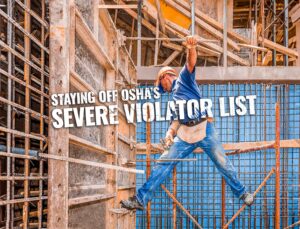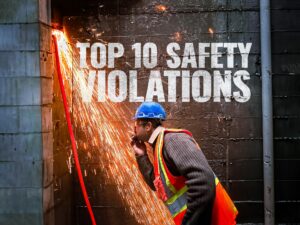What is a Progressive Disciplinary Program?
Progressive safety disciplinary programs have become an essential tool for high-risk industries such as oil, gas, manufacturing, and construction. These industries often involve hazardous work conditions, resulting in severe accidents and injuries if safety standards are not followed. Implementing a progressive safety disciplinary program can help mitigate risks and ensure the safety of employees in these industries.
A progressive safety disciplinary program is a system that encourages safe behavior and discourages unsafe behavior through a series of escalating consequences. It is based on the concept of “progressive discipline,” where the severity of the punishment increases with the frequency and severity of the offense. However, a safety disciplinary program focuses on correcting unsafe behavior rather than punishing employees.
The program starts with education and training, which is critical for developing a safety culture within the organization. Employees must be made aware of the hazards and risks associated with their work and the safety procedures and protocols that must be followed to avoid accidents and injuries. Once employees are trained, the program moves on to monitoring and feedback. Regular safety inspections, audits, and observations are conducted to identify unsafe behavior and provide employee feedback. This feedback should be constructive, specific, and timely to ensure employees understand what they are doing wrong and how to correct it.
The next step is coaching and counseling, which involves working with employees to help them develop safe behavior. This can involve one-on-one coaching, group training sessions, or mentoring programs. The goal is to help employees understand the importance of safety and develop the skills and knowledge necessary to work safely.
If coaching and counseling do not result in the desired behavior change, the program moves on to progressive consequences. This involves a series of escalating consequences for repeated safety violations. For example, the first offense may result in a verbal warning, the second offense in a written warning, the third offense in suspension or probation, and the fourth offense in termination.
The key to a successful progressive safety disciplinary program is to make it fair, consistent, and transparent. The consequences of safety violations should be clearly defined and communicated to all employees. They should also be applied consistently across the organization to ensure everyone is accountable for their actions. Furthermore, employees should be given the opportunity to appeal any disciplinary action they receive.
In addition to providing a safe work environment, a progressive safety disciplinary program can have several other benefits for high-risk industries. For example, it can help reduce workers’ compensation costs by reducing the number of accidents and injuries. It can also improve productivity by reducing the amount of time lost due to accidents and injuries.
Progressive safety disciplinary programs are an essential tool for high-risk industries such as oil, gas, manufacturing, and construction. They provide:
- A systematic approach to promoting safe behavior.
- Correcting unsafe behavior.
- Holding employees accountable for their actions.
By implementing such programs, organizations can create a culture that values safety, reduce the number of accidents and injuries, and improve overall productivity. For more guidance on progressive disciplinary processes and procedures, contact us today and connect with a safety expert.
Recommended Reading
TOP OSHA Citations by Industry
OSHA, or the Occupational Safety and Health Administration, is a government agency that enforces workplace safety regulations in the United States. One of their primary functions is to conduct inspections of workplaces to ensure compliance with these regulations. When violations are found, OSHA can issue citations and penalties. In this blog post, we will explore…
Staying off OSHA’s SVL (Severe Violator List)
Staying off of OSHA’s Severe Violator List is important for any business to maintain a safe work environment and avoid costly penalties. The Severe Violator List (SVL) is a program launched by the Occupational Safety and Health Administration (OSHA) to focus on employers who have committed severe or repeated violations of workplace safety regulations. Being…
Top 10 Safety Violations in Manufacturing
Manufacturing is an industry that requires strict adherence to safety regulations to ensure the health and well-being of employees, as well as the quality of the products produced. Unfortunately, there are still too many safety violations that occur in the manufacturing industry – causing billions of dollars in irreparable and tragic incidents. Here are the…
SAFETY MANAGEMENT SIMPLIFIED
Prevent Tragedy and Scale Effectively by Making Safe Work Efficient




